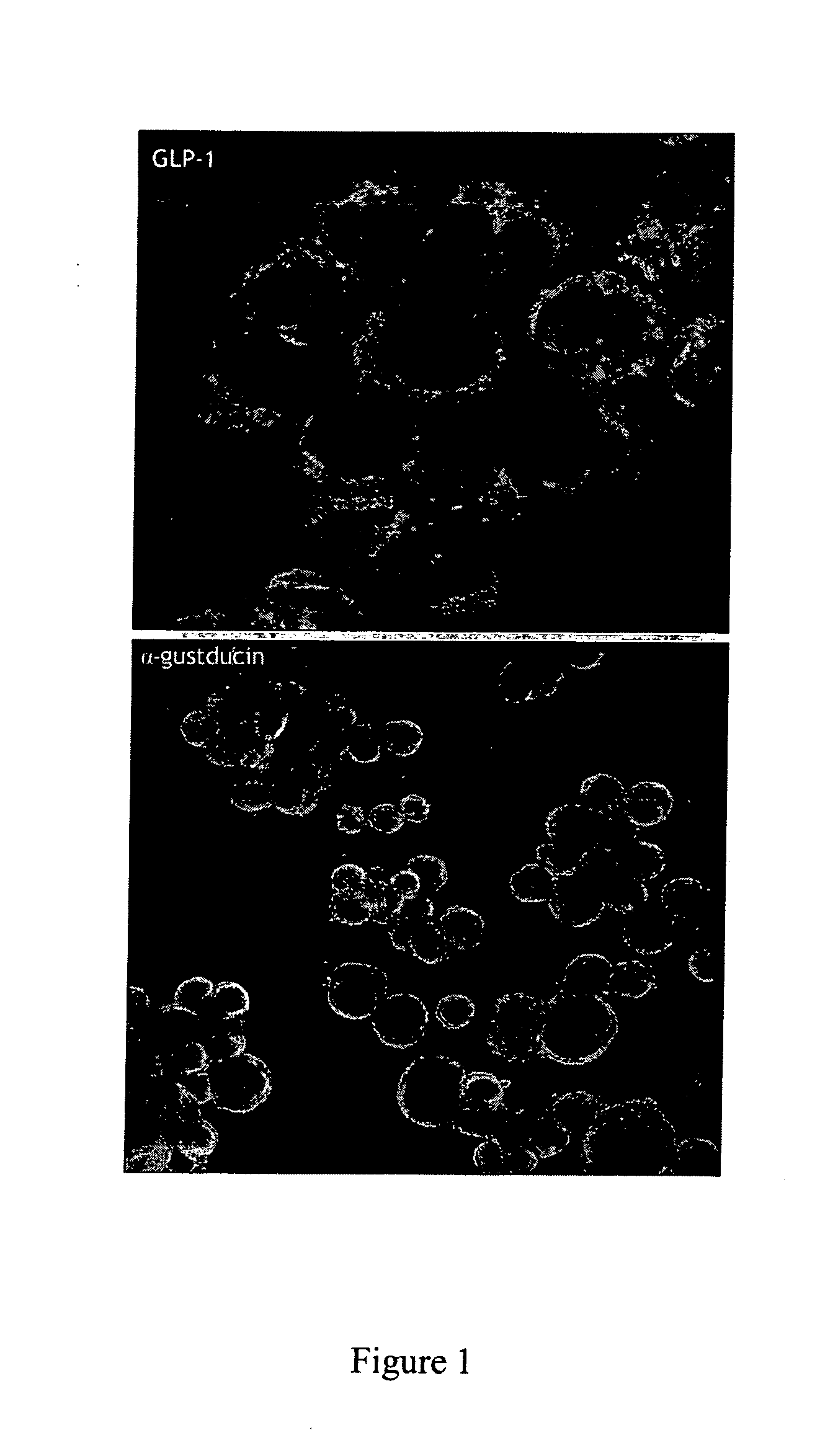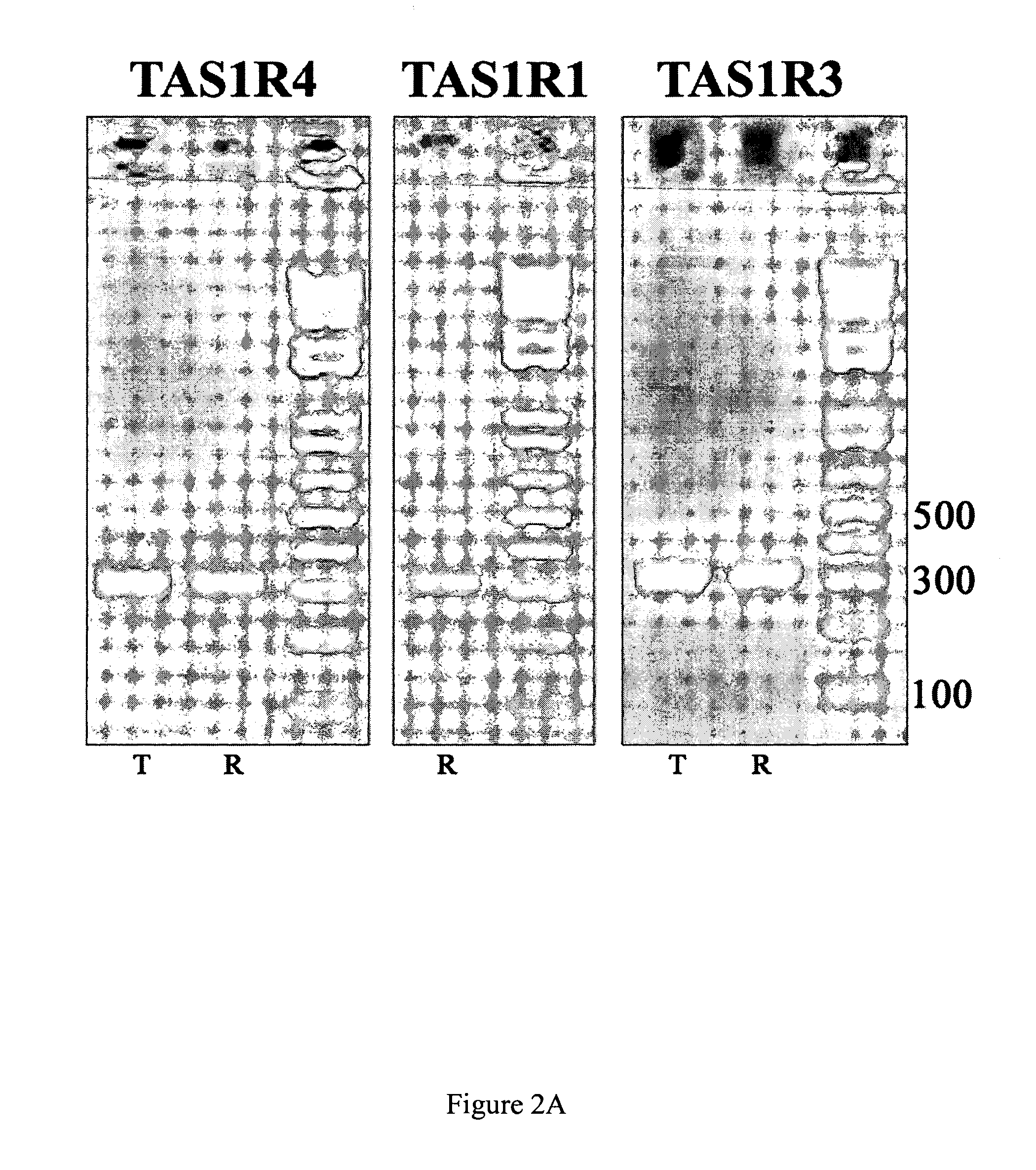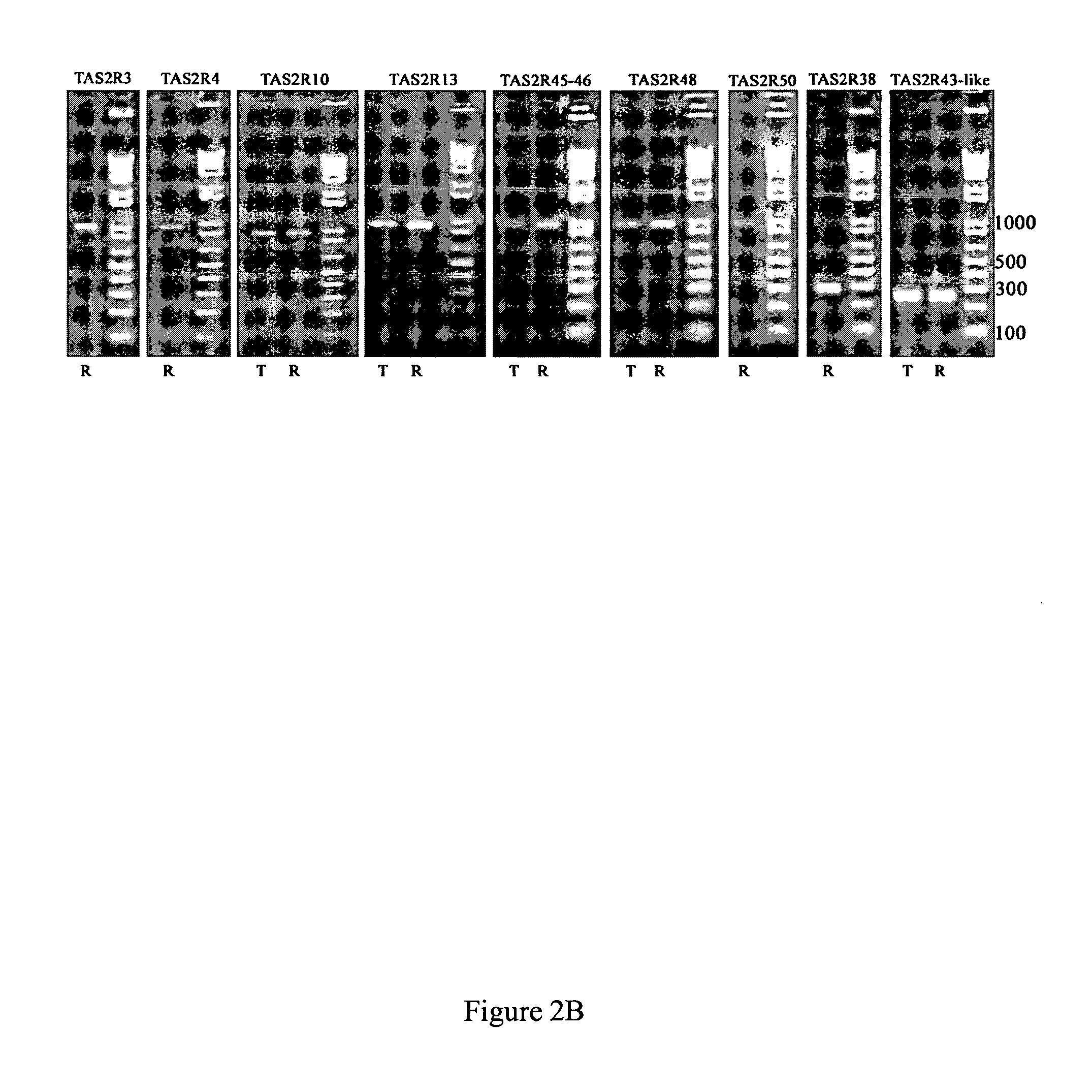Taste signaling in gastrointestinal cells
a technology of gastrointestinal cells and taste signals, applied in the field of taste transduction, can solve the problems of preventing rapid oral absorption of pharmaceuticals, ineffective approach at masking the taste of bitter compounds, and many taste-mimicking or taste-blocking agents developed to date are not suitable as food additives, so as to increase decrease the synthesis of human gastrointestinal cells
- Summary
- Abstract
- Description
- Claims
- Application Information
AI Technical Summary
Benefits of technology
Problems solved by technology
Method used
Image
Examples
example 1
Immunofluorescence and RT-PCR Assays for GLP-1
[0102] Cells were grown on matrigel-coated cover slips and grown to confluent monolayers in 12-well plates at 37° C. They were fixed in 4% paraformaldehyde in phosphate-buffered saline (PBS) and incubated with the primary antiserum (rabbit anti-alpha gustducin, 1:150; Santa Cruz Biotechnology, and rabbit anti-GLP-1, Phoenix) overnight at 4° C. following permeabilization with 0.4% Triton-X in PBS for 10 minutes and blocking for 1 hour at room temperature. Following three washing steps with blocking buffer, the appropriate secondary antibody was applied (AlexaFluor 488 anti-rabbit immunoglobulin, 1:1000; Molecular Probes) for 1 hour at room temperature. After three washing steps, the cells were fixed in Vectashield medium. As shown in FIG. 1, NCI-H716 cells contain GLP-1 and gustducin α.
[0103] RT-PCR RNA isolation from cells was done using standard methodology. The RT-PCR reaction was performed in a volume of 50 μl in a Peltier thermal c...
example 2
RT-PCR Assays for TAS1R and TAS2R Receptors
[0104] Total RNA isolated from NCI-H716 cells was reverse-transcribed using either oligo-dT (lanes marked “T” in FIGS. 2A and 2B) or random primers (lanes marked “R” in FIGS. 2A and 2B) to generate cDNA for PCR. PCR was carried out with different specific primer sets to amplify fragments or full-length transcripts of individual members of Taste Receptor family 1 (TAS1Rs, see FIG. 2A) and of Taste Receptor family 2 (TAS2Rs, see FIG. 2B). Because TAS2R43 and TAS2R44 are quite similar and TAS2R45 and TAS2R46 are also quite similar, in these cases degenerate primer pairs were used to amplify full length TAS2R45 / TAS2R46 receptors (TAS2R45-46, see FIG. 2B) and an ˜300 bp fragment of TAS2R43 / TAS2R44 receptors (TAS2R43-like, see FIG. 2B). PCR products were electrophoresed through 2% agarose gels followed by ethidium bromide staining to visualize the amplified DNAs. To determine the size of the PCR products molecular weight markers (1 Kb+ ladder; I...
example 3
Radiometric [35S] GTPγS Binding Assay
[0108] [35S] GTPγS binding assays were performed in triplicate in 96-well plates [see Northup et al., J. Biol. Chem., 257, 11416-23 (1982)]. To each well the following was added and allowed to incubate for 2 hours at 25° C.: 0.25 μl of a 2× buffer (5 mM HEPES pH 7.8, 1 μM GTPγS, 4 μCi / ml [35S]GTPγS); 10 μl 50 mM dextromethorphan or doxylamine; and 15 μl (6.7 mg / 15 ml) NCI-H7-16 cell membranes or supernatant (supernatant from NCI-H716 cells spun at 900 g (S1), pellets from NCI-H716 cells spun at 900 g (P1), and pellets from NCI-H716 cells spun at 100,000 g (P2)). Where indicated, transducin was also added (4 μg / 50 μl assay). The total assay volume per well was 50 μl.
[0109] To separate the free [35S] GTPγS from the [35S] GTPγS that bound to G proteins, 40 μl of the mixture was filtered using a pre-wet Millipore Multiscreen Filtration opaque 96-well plate (0.45 μm mixed cellulose acetate, #MHABN4550). The samples were washed three times with 0.2 m...
PUM
 Login to View More
Login to View More Abstract
Description
Claims
Application Information
 Login to View More
Login to View More - R&D
- Intellectual Property
- Life Sciences
- Materials
- Tech Scout
- Unparalleled Data Quality
- Higher Quality Content
- 60% Fewer Hallucinations
Browse by: Latest US Patents, China's latest patents, Technical Efficacy Thesaurus, Application Domain, Technology Topic, Popular Technical Reports.
© 2025 PatSnap. All rights reserved.Legal|Privacy policy|Modern Slavery Act Transparency Statement|Sitemap|About US| Contact US: help@patsnap.com



